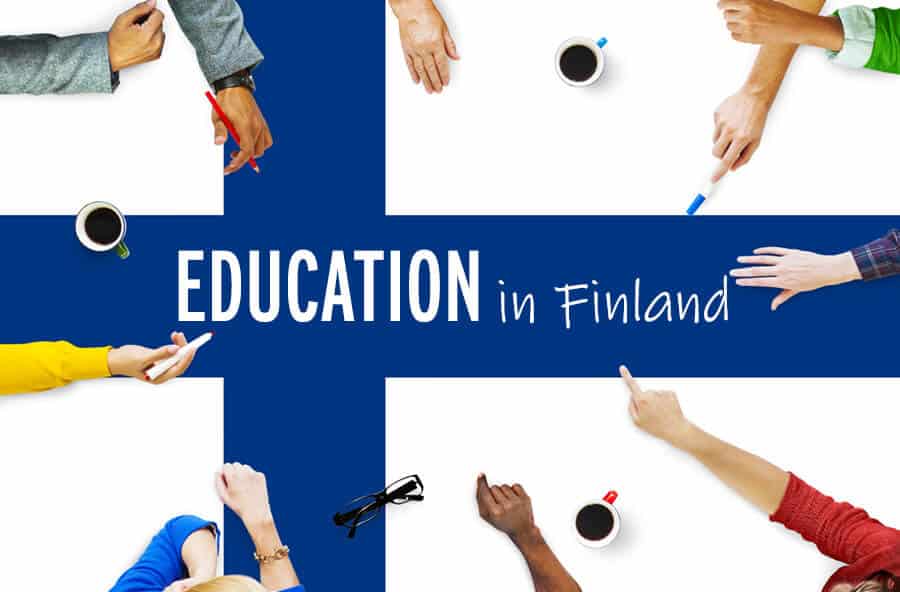In 1968, the Finish parliament introduced a legislation reform meant to improve the education system of Finland. They had free comprehensive schools for children between seven and sixteen replace the two-tier system of grammar schools and civic schools. Read about Finland’s long, successful way towards better, contemporary education.
You have probably heard about the progressive Finish education, and the miracles that the education system in Finland is doing – results that have been reflected in PISA tests, and reflected through the years in well-prepared youngsters. But what are they doing exactly? And why this much praise?
The qualification of teachers
The Truth is, Finish teachers spend more time building strong curriculums than they do within classrooms. They invest so much more in teaching their students of numerous learning methodologies they can use, rather than imposing strict school hours or in-class activities. But, of course, they have earned their respect along with their work and qualifications.
In order to be a primary or secondary teacher in Finland, you must have a master’s degree to qualify. Teaching is a respected profession and entrance to university programs is highly competitive, with only about 10% of applicants to certain programs ending up being successful. According to the Finish standard, a prospective teacher must have very good grades and must combat fierce opposition in order to become a teacher. However, this standard had a long history behind it.
Everything started changing after 1960 when the Finish Lawmakers decided that investing in public schools creates the foundation for a brighter future. After the education legislation reform in Finland, public schools would be organized into one system of comprehensive schools, or peruskoulu, for ages 7 through 16. Finland has teachers from all over the country contributing to compiling a national curriculum that provided guidelines, not prescriptions. Gradually, the comprehensive schools showed significant improvement, along with the upper secondary schools (grades 10 through 12).
Later on, in 1979 reformers required that every teacher earn a fifth-year master’s degree in theory and practice at one of eight state universities—at state expense.
Smithsonian describes that from then on, teachers were effectively granted equal status with doctors and lawyers.
“Applicants began flooding teaching programs, not because the salaries were so high but because autonomy and respect made the job attractive. In 2010, some 6,600 applicants vied for 660 primary school training slots, according to Sahlberg. By the mid-1980s, a final set of initiatives shook the classrooms free from the last vestiges of top-down regulation. Control over policies shifted to town councils. The national curriculum was distilled into broad guidelines. National math goals for grades one through nine, for example, were reduced to a neat ten pages. Sifting and sorting children into so-called ability groupings was eliminated. All children—clever or less so—were to be taught in the same classrooms, with lots of special teacher help available to make sure no child really would be left behind. The inspectorate closed its doors in the early ’90s, turning accountability and inspection over to teachers and principals.” – LynNell Hancock, Smithsonian Magazine.
The child – student-centered approach
According to the OECD, students in Finland have the least amount of outside work and homework than any other student in the world. They spend only half an hour a night working on stuff from school. Sound amazing doesn’t it? And they’re out there outperforming, although they also have such short hours to spend within their classrooms. Instead of having to think of waking up early and catching the school bus, Finish students start school from 9:00 – 9:45 AM and they end at 2:00, 2:45. The breaks in between their classes are longer, and the class periods are longer too. The Finish (based on research) believes that early start times of studying can be detrimental to student’s health, maturation, and overall well-being.
Even while they’re at school, children spend more time playing outside rather than inside, even in cold winter days. And what’s even more interesting, is that compulsory school for Finish children does not start up until they become 7 years old. The Finish are in no rush, and they believe that they should let kids just be kids, and start school in a more developed and ready state of being.
There are only 9 years of compulsory school that Finnish children are required to attend. Everything past the ninth grade or at the age of 16 is optional. Schools provide food, medical care, counseling, and taxi service if needed. Student health care is free.
There are no standardized tests
The Finland education system does not favor competition between its students, that’s why there are no mandated standardized tests in Finland, except from one exam at the end of students’ senior year in high school. There are no rankings or comparisons between students, schools or regions.

“Filling in bubbles on a scantron and answering pre-canned questions is somehow supposed to be a way to determine mastery or at least competence of a subject. What often happens is that students will learn to cram, just to pass a test and teachers will be teaching with the sole purpose of students passing a test. Learning has been thrown out of the equation.” – Mike Colagrossi, for World Economic Forum.
Generally speaking, Finish teachers decide to believe in their students’ capacities, instead of test results. Hence, the students feel appreciated and like they are following the right learning pace.
And of course, a huge difference in all this success makes the fact that Finland’s schools are publicly funded. However, except for that, there’s also a big advantage of people in the government agencies, national officials, local authorities, that run the educational system are educators themselves. They are not the business people; military leaders or career politicians you would typically expect.
The world is taking notes from the Finish system. And the fact that their students are thriving day by day, should make all educational systems, specifically the traditional ones, reconsider their education policies.
Photos: Shutterstock / Edited by: Martina Advaney
Read more on education in Finland:
Support us!
All your donations will be used to pay the magazine’s journalists and to support the ongoing costs of maintaining the site.
Share this post
Interested in co-operating with us?
We are open to co-operation from writers and businesses alike. You can reach us on our email at [email protected]/[email protected] and we will get back to you as quick as we can.











